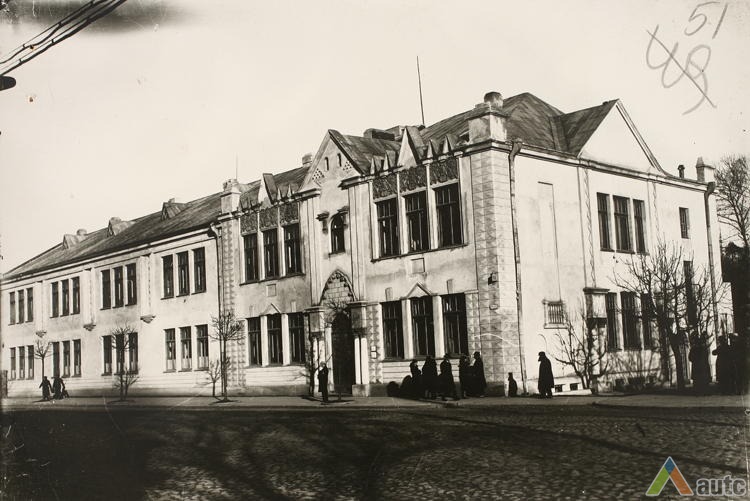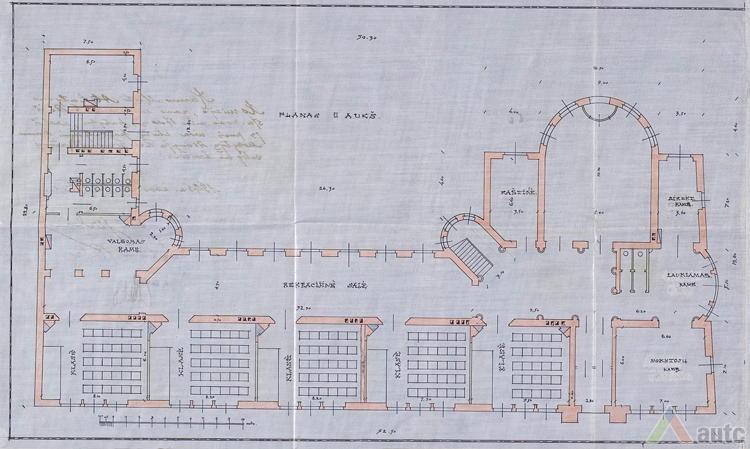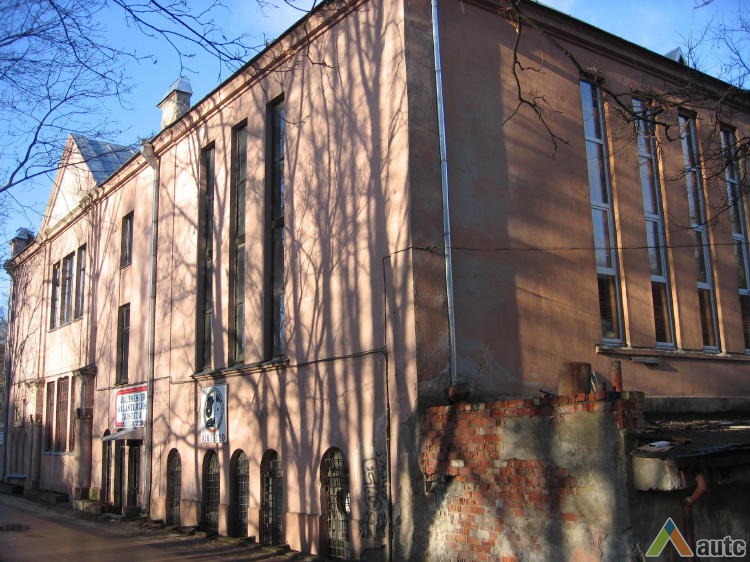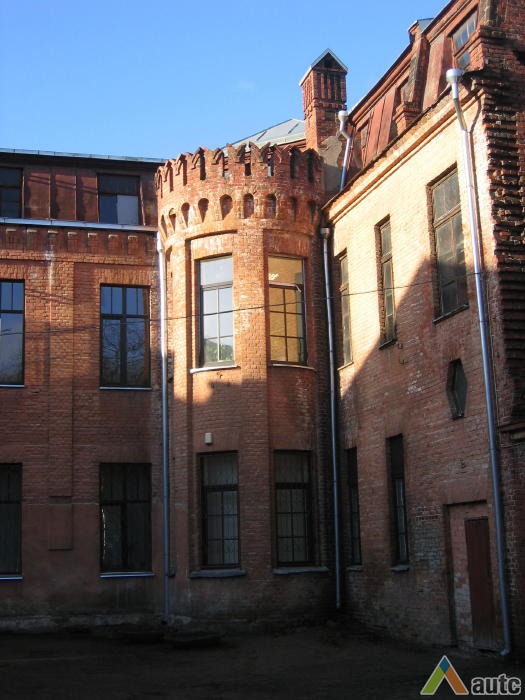![<p style="text-align: justify;">Ever since its establishment in 1847, Kaunas (Carmelites) cemetery became an important urban example of multiculturalism — “the cemetery was divided into three large areas: the Southern was given to Orthodox Christians, the middle (the largest one) — to Catholics, and the Northern — to Evangelical Lutherans [Germans]; the latter had a small piece of land devoted to Muslims”. During the interwar period the cultural value of this territory definitely increased, as Tatars built a mosque on their piece of land and Germans — a gymnasium on theirs. In 1925 Orthodox Christians also built a gymnasium, complemented by Revelation Church in 1935. Nevertheless, “near the gymnasium there were several wooden buildings: Russian elementary school, priest’s house, two-story student dormitory and a shop”. Interesting fact, Polish Adomas Mickevičius Gymnasium was opened on the other side of Vytautas Avenue in 1931. Across the cemetery, on Trakai Street, a modern elementary school for Lithuanian children was built in 1929.</p>
<p style="text-align: justify;">Kaunas Mokslas Ir Šviesa teacher society’s gymnasium building was one of the most magnificent educational objects in Kaunas during the first decade of the independence. “The attempt was to give it a romantic tone. The southern face of the building is accentuated by Neo-Russian style decor (faceted rustication, reliefs), cilindrical-shaped avant-corps on the back end are topped by embattled parapets picked up from Russian defensive architecture.” Although the building gives away a historical look, the functional layout of the school draws our attention to unusually wide corridors on both floors, referred to as the “recreational hall”. Hence, although the layout can hardly be called rational, it allowed having bright and open spaces which at that time was perceived as a clear sign of modernity. </p>
<p style="text-align: justify;"><em>Vaidas Petrulis</em></p>](https://autcserver.baco.lt/api/images/heritage/EBE77AC5-F9CB-40EB-BF12-FA798940FC09)
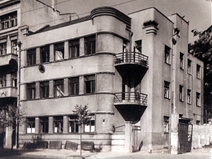






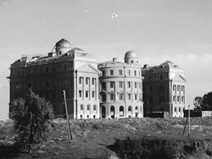







Ever since its establishment in 1847, Kaunas (Carmelites) cemetery became an important urban example of multiculturalism — “the cemetery was divided into three large areas: the Southern was given to Orthodox Christians, the middle (the largest one) — to Catholics, and the Northern — to Evangelical Lutherans [Germans]; the latter had a small piece of land devoted to Muslims”. During the interwar period the cultural value of this territory definitely increased, as Tatars built a mosque on their piece of land and Germans — a gymnasium on theirs. In 1925 Orthodox Christians also built a gymnasium, complemented by Revelation Church in 1935. Nevertheless, “near the gymnasium there were several wooden buildings: Russian elementary school, priest’s house, two-story student dormitory and a shop”. Interesting fact, Polish Adomas Mickevičius Gymnasium was opened on the other side of Vytautas Avenue in 1931. Across the cemetery, on Trakai Street, a modern elementary school for Lithuanian children was built in 1929.
Kaunas Mokslas Ir Šviesa teacher society’s gymnasium building was one of the most magnificent educational objects in Kaunas during the first decade of the independence. “The attempt was to give it a romantic tone. The southern face of the building is accentuated by Neo-Russian style decor (faceted rustication, reliefs), cilindrical-shaped avant-corps on the back end are topped by embattled parapets picked up from Russian defensive architecture.” Although the building gives away a historical look, the functional layout of the school draws our attention to unusually wide corridors on both floors, referred to as the “recreational hall”. Hence, although the layout can hardly be called rational, it allowed having bright and open spaces which at that time was perceived as a clear sign of modernity.
Vaidas Petrulis
